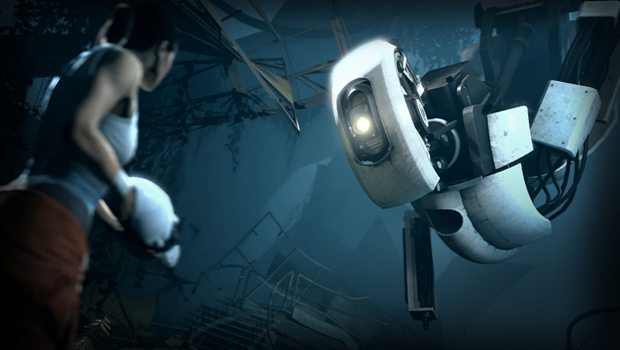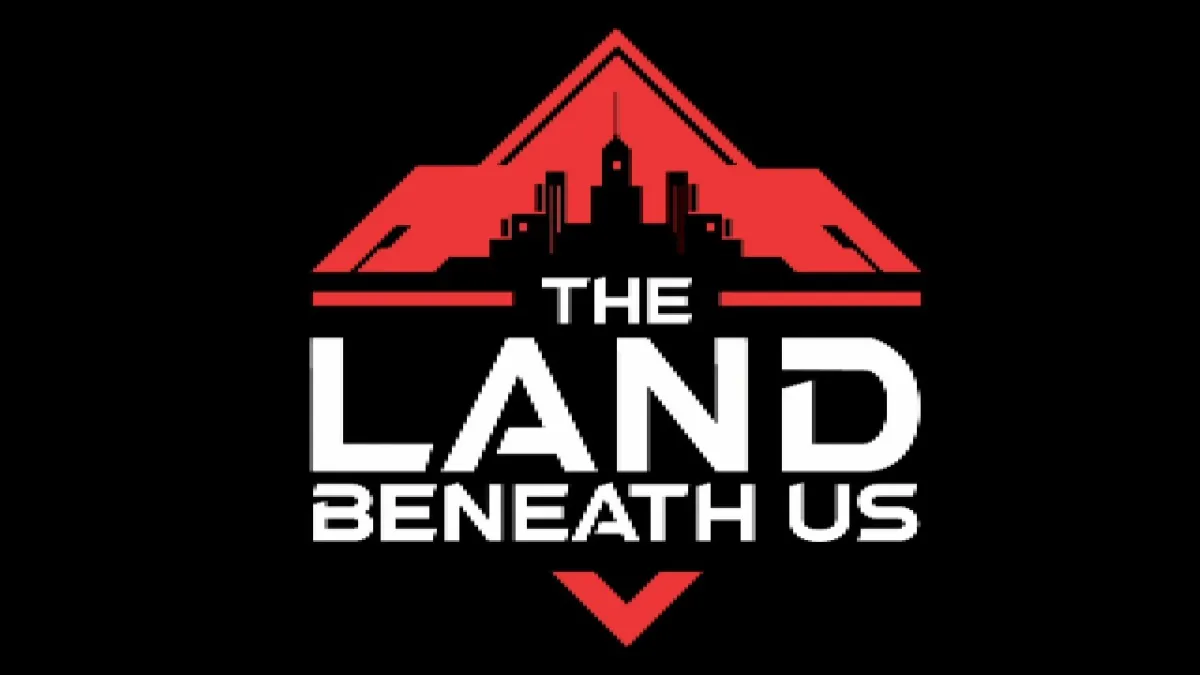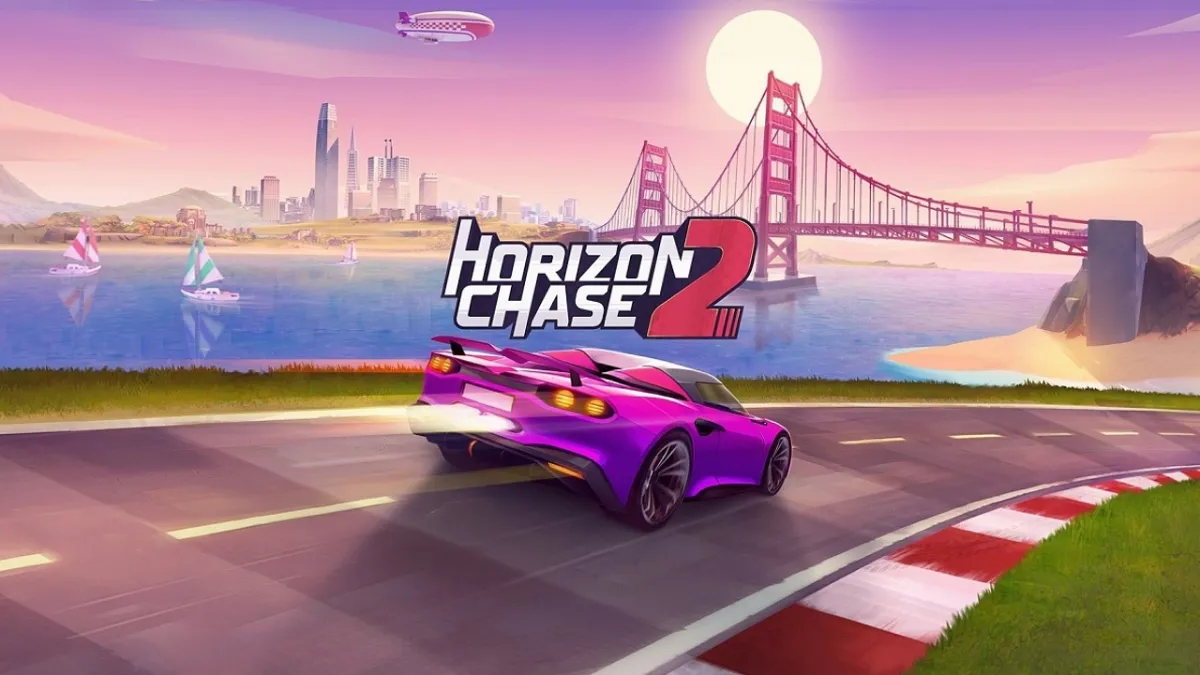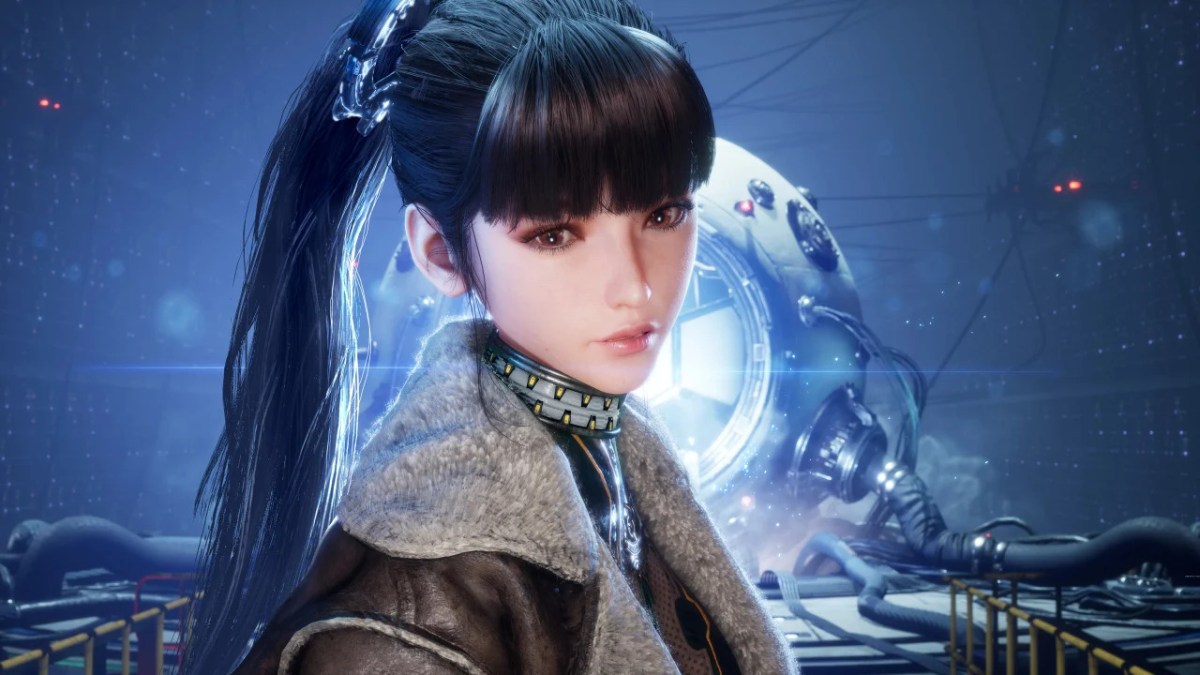Portal 2 is a unique first-person Action-Puzzle-Platforming game that tests player’s abilities to think and act creatively as they use the game’s ingenious wormhole creating portal gun to produce their own paths through otherwise sealed surfaces and across the open spaces of the game. Sequel to the original Portal game — the surprise add-on hit included in Valve Corporation’s 2007 release The Orange Box — Portal 2 continues the storyline from the first game, featuring both new and returning characters, and poses a range of new challenges making for a much deeper game. Additional features include a new two player co-op mode and an original soundtrack. – Valve
It’s tough being a fan of Valve made games. When sequels come out to our beloved games, there’s always a sliver of doubt that Valve will be able to recreate the magic from their originals. Even more so with Portal 2. Because the original Portal was such a unique game, one that almost lay in guise for it’s entirety before springing to life and surprising the hell out of you for a roller coaster finish. The sad part about it was that just as a puzzle based game, judging the core mechanics only, Portal was an extremely fun title. So how could Valve re-create that surprise? In Portal 2, it’s not so much that Valve recreated the feeling from the first game, as much as expanding on and answering many of the questions from the original. Portal 2 is fairly familiar territory at its heart, and players of the first game will have a head start on newcomers to the franchise. With more room to expand on the puzzle premise of Portal 2, Valve has incorporated some new dynamics into the puzzle solving. These new additions fit so perfectly it’s a wonder that we ever made it through the first game without them. The gels are probably the biggest addition to the puzzle element of the game. There are three types which are funnelled into the campaign through Cave Johnson’s testing segment. The propulsion gel, an orange goo that will allow you to run at greater speeds making seemingly impossible leaps. The repulsion gel, a blue substance that will let you jump much higher than you normally could, as well as bounce off of when hitting on a jump. Lastly a gel that is comprised of crushed moon rocks, which are a portal conductor. The white gel, allows you to place portals any where that has this gel on it’s surface. Using these three gels in tandem with the Portal Gun, Weighted Cubes, Levers, Energy Bridges, and your imagination, you’ll make your way through the Aperture testing facility. By games end you’ll be needing to utilize all of these option available to you to progress. With so many ways to accomplish puzzles in Portal 2 you’ll definitely be left scratching your head at some moments of the game.. in a good way. As we said above, the puzzle aspect of Portal was great. With it’s expansion in Portal 2 you’ll have plenty of opportunity to show GLaDOS your proficiency in the test chambers of the game. In this full retail release the puzzles are larger and there’s more of them as well as an expansion of the story. Portal 2 will take you on a journey down to the deepest bowels of Aperture Laboratories and all the way back up to it’s tattered surface.
The writing in Portal 2 is once again, top notch. With the story behind the game getting a much deeper explanation than the first title,you can expect some nice twists and turns along the way. You’ll be introduced to some new characters from the world of Aperture science. Wheatley, a robot guide who will be doubling as your narrator for a portion of the game is one such new character. His introduction follows the mold of characters from Portal, unlike GLaDOS, his humor is more lightly taken and much less sinister. You’ll also be introduced to Cave Johnson, the CEO of Aperture Science who was introduced in the Investment Opportunity videos that Valve released leading up to launch. As the CEO, Cave Johnson has a unique perspective to convey as your narrator for his portion of the game. He’ll be guiding you through areas of the Aperture Labs that were once just the stuff of your imagination. There are actually nine single player chapters to play through, with some very unique sights to be seen. It’s more Portal than you’re used to in amounts of content and level of story development, but it’s a ride that is pitch perfect as far a narrative. There never seems to be a lull in the action, unless that is you become stumped by a specific objective.
The thing that I loved most about Portal 2, was that the ending felt like a video game should. Without going into too much detail, Valve did everything right. The reward of finishing a game should be well….rewarding, and not just the first commercial for the sequel, which sadly, is the case for many of today’s games.
Of the original game’s biggest draws, Portal offered a great deal of re-playability in that there were many different ways to complete puzzles. For the most part, this has returned in Portal 2. The single player testing chambers have multiple ways to complete your objectives. Although, when the single player story is over there’s a full featured cooperative campaign that is a completely separate story to tackle. You’ll have the option to complete the cooperative missions via the network of your choice, with the PlayStation Network and STEAM having cross-platform compatibility. The cross platform compatibility will allow users on the PSN to play with players on STEAM’s online network. PlayStation 3 players will also get a STEAM overlay that will let them track their friends on the network, achievement progress, as well as cloud based saving.
With five areas to navigate in the cooperative campaign, and between 6-8 chambers for each, the cooperative mode of Portal 2 is fairly large. The campaign doesn’t quite have the narrative that the single player portion has, but it does follow a loose script which is narrated by your not-so-friendly tour guide, GLaDOS. Working together in the cooperative mode of Portal 2 is a must. The puzzles are fun, and there are lots of laughs to be had in the mode. The animations of Atlas and P-body accompanied by the teasing of GLaDOS make for some interesting moments. There’s a great balance between difficulty and fun in the cooperative mode of Portal 2 because of Valve’s great use of humor and how the characters play off of each other. My partner and I had a pretty seamless run through the mode which took us about 6 hours to complete start to finish. This included quite a few points where we stood around high fiving each other, hugging it out, and playing rocks-paper-scissors.
You’ll need to be thinking in a whole different manner to progress to the end of the cooperative mode, and I had to thank my partner for many of the ingenious solutions he came up with to get us through the levels. For the most part, the beginning of Portal 2’s cooperative mode is a breeze. You’ll be learning timing based challenges which will prompt you to utilize some of the unique features of the game. This includes your ping beacon, which shows your partner where to place a portal. It’ll also have you using the count-down feature which will flash a three second countdown to assure you are both ready to perform an action simultaneously. You’ll also have the ability to see through your partners eyes in a handy camera that pops up in the bottom right of your screen. Around the time that you become familiar with the controls of Portal 2’s cooperative mode the difficulty begins ramping up considerably, following a very similar path to the single player portion of the game. Puzzles will become much more complex and require some very serious out of the box thinking to accomplish.
One thing that you’ll notice when popping in Portal 2 for the first time is that the there’s not a huge leap in graphical fidelity for the game. Does it look better than the original? Yes, it does look better in many areas but there’s nothing really ground-breaking here when it comes down to graphics. However, Portal never really was about insane visuals as much as it was about experiementation, physics, and fun. So if you are graphics hound that is only impressed by the latest lighting techniques and high resolution textures, Portal 2 might not impress you very much.
Portal 2 does make a great case in the debate of graphics and gameplay. The sterile appearance of many of the game’s test chambers don’t give Valve much room to showcase graphics anyway. When it matters though, the graphics do well enough. Combined with the stellar gameplay and overall presentation, the full package left us unconcerned about some of the more minuscule visual details of the game. This isn’t to say that Portal 2 isn’t a good a looking game, not by any means. The game just doesn’t have the same level of visuals that are found in today’s AAA big budget first person titles.
As a fan of the first game it was like trying to pick a needle from a haystack of goodness when looking for things to complain about with Portal 2. The game met and exceeded all of my expectations for what I wanted in a sequel. However, a couple of things stood out to me. When playing the cooperative mode for Portal 2 the first thing you’ll notice is that your Portal colors have now switched. Instead of the standard Blue and Orange portals, you’ll either be firing Blue and Light Blue or Orange and Red. In a game that already takes your brain behind the woodshed, it’ll take some time to get accustomed to the new colors.
I think the biggest reason is this. In the single player portion of the game, your standard portal placement is Left Trigger=Orange and Right Trigger=Blue. When you go to cooperative mode as P-body, Right Trigger=Orange and Left Trigger=Red. If you go from playing the single player to cooperative it takes some time getting used to. As my partner can attest to I killed us numerous times, so much so that it became humorous near games end. My brain had connected Left Trigger=Orange and there was no breaking that connection. Many people won’t have these same issues, perhaps they have more flexible brains or play in smaller portions, but after chugging through the campaign in around 10 hours, then going on to cooperative the following day, I found this to be the case for me.
Portal 2 Cooperative mode is BEST PLAYED WITH A FRIEND. Valve even warns of this when using the game’s built in matchmaking to find a stranger to play with. When I was attempting to locate a partner for a run through the cooperative mode, I ran into what many will find on any of the online services: mic-less strangers that refuse to communicate in a game centered around communication. Despite Valve’s best efforts with the inclusion of many tools to communicate without a microphone, one is mandatory. You can still play the game without one cooperatively, but the experience is horrible. Your team won’t likely stay together very long, as some of the puzzles are more complex than can be communicated via the in-game methods.
That being said, most people that are playing solo on Xbox Live and looking for a partner don’t have a microphone. Our recommendation is to buddy up with a partner that has a microphone because Portal 2 cooperative is one of the most enjoyable cooperative experiences on the market, if done right.
Whether you are an experienced test subject or are just experiencing Portal for the first time, Portal 2 is a great game. The Portal puzzle solving premise has only gotten better from the original with the inclusion of plenty of new tricks you’ll need to master if you want to finish the game. Not only do the new puzzle solving mechanics make for deeper puzzles in general, but they seem to make them more fun in the process. Take into consideration that you also have a much deeper story, with a much more developed narrative, and the end result is a multi-faceted single player experience that is a blast to play. Offering an equally impressive cooperative mode, these two distinct gameplay offerings make up the ultimate version in Portal 2, which fans should cherish for some time to come.









Published: Apr 19, 2011 12:01 am